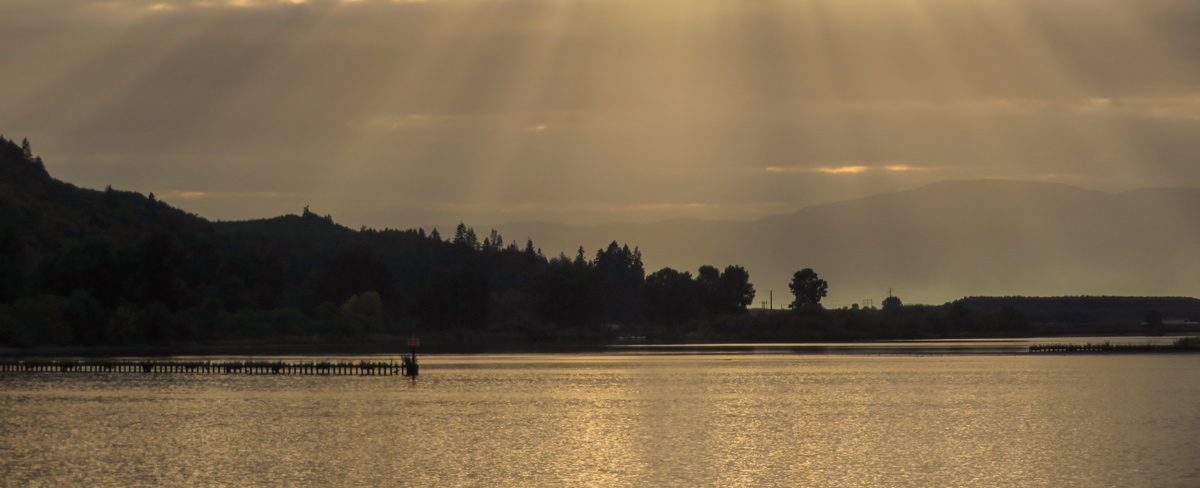After a night made wet from rain and a high tide, they paddle approximately eighteen miles up the Columbia River and camp on an island near an area they call “fannys bottom”. Lewis collects plant specimens, compares bald and golden eagles, and describes substitutes for tobacco.
Crims Island is at the upper end of what Clark called “fannys bottom” and close to the site of the first European trading post in present-day Oregon. For that story, see The Skilloots.
Wet Night
the wind ran high last night and the tide rose higher than common and came in under my blankets before I awoke and obledged me to move twise Several more of the party camps were routed also.— our officers gave one of the Cath lih mahs [Kathlamets] a meddel. he gave them in return a large Sturgeon.
—John Ordway
Substitutes for Tobacco
they wish tobacco in exchange for their dogs which we are not disposed to give as our stock is now reduced to a very few carrots. our men who have been accustomed to the use of this article Tobaco and to whom we are now obliged to deny the uce of this article appear to suffer much for the want of it. they substitute the bark of the wild crab which they chew;
—Meriwether Lewis
Bald v. Golden Eagle
I had now an oportunity of comparing the bald with the grey Eagle; I found that the greay Eagle was about ¼ larger, it’s legs and feet were dark while those of the bald Eagle wer of a fine orrange yellow; the iris of the eye is also of a dark yellowish brown while that of the other is of a bright silvery colour with a slight admixture of yellow.
—Meriwether Lewis
“fannys bottom”
This bottom we also Call fannys bottom it is extensive and an open leavel plain except near the river bank which is high dry rich oak land.
—William Clarknear the river towards the upper point we saw a fine grove of whiteoak trees;
—Meriwether Lewis
Weather Diary
Aspect of the weather at Rise
Wind at rise
Aspect of weather at 4 O’Ck P. M. Wind at 4 OCk. P. M. cloudy after rain N. W. cloudy after fair & cloudy S. E cold and rainy last night. wind hard this morning fair at 9 A. M. Cloudy at 1 P. M. The humming bird has appeared. killed one of them and found it the same with those common to the United States.
—Meriwether Lewis[1]To assist the reader, the editor of this web page has omitted the “Day of the Month” column and spelled out some abbreviations.
Experience the Lewis and Clark Trail
The Lewis and Clark Trail Experience—our sister site at lewisandclark.travel—connects the world to people and places on the Lewis and Clark Trail.
Plan a trip related to March 26, 1806:

Notes
| ↑1 | To assist the reader, the editor of this web page has omitted the “Day of the Month” column and spelled out some abbreviations. |
|---|


